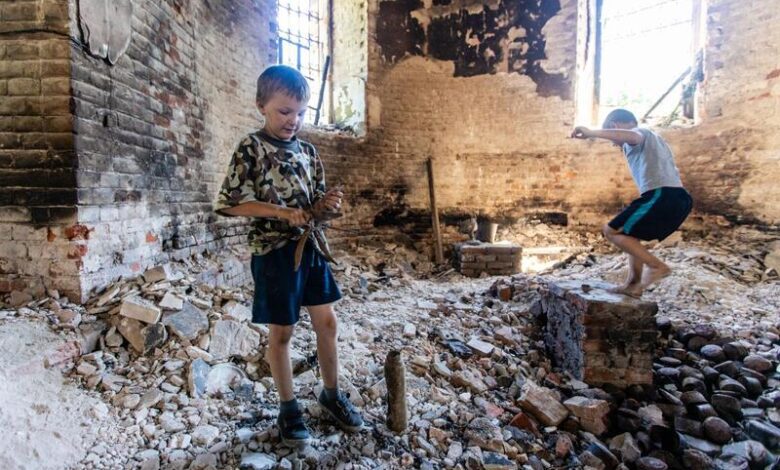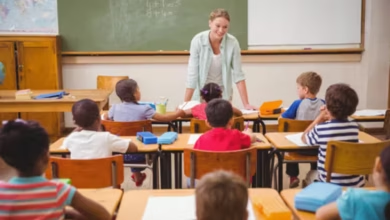Mine education is a vital issue for Ukrainian children

After the start of the full-scale war, Ukraine found itself among the most mined countries in the world. Much of the area, including agricultural fields, roadsides, wooded areas, and even residential areas, potentially contains explosive ordnance. Millions of children live in such an environment. In many communities, they cross daily through areas that have previously experienced shelling or fighting. Combined with children’s ignorance and natural curiosity, this creates a high risk of exposure to mine hazards. Under these circumstances, informing children about the rules of handling suspicious objects and minimal skills of orientation in a potentially dangerous environment become an element of basic safety.
The Mine Map of Childhood: What’s Really at Risk
Ukrainian children are in a potential risk zone every day, even when adults consider the surrounding area safe. Ammunition can be hidden not only on the skirmish line or in trenches, but also in abandoned yards, forest strips, game areas, in fields where crops were previously harvested. After the de-occupation of populated areas, even a visually “peaceful” area can hide fragments of shells, stretch marks, mines left after battles or artillery shelling.
A child who finds part of a rocket or an object that looks like a grenade fuse does not perceive it as a threat. She sees an interesting find, potentially a “toy”, and it is at this moment that the countdown to tragedy becomes very short. Without clear and systematic educational work, such incidents are inevitable.
Education as a preventive tool: what every child should know
There are things that should not be put off until “tomorrow”, and talking to your child about mine hazards is one of them. It’s not about intimidation, it’s about simple and accessible age-appropriate information that can be life-saving.
First of all, children should understand that any unfamiliar object on the street, in the field, in the yard or in the forest can pose a mortal threat. It is important to explain: mines, projectiles, streamers, even if they look “harmless”, cannot be touched, moved, or examined. The child should know that the first thing to do in case of finding a suspicious object is to move to a safe distance and immediately notify adults or rescuers.
Adults, in turn, should establish clear and clear rules: do not approach unknown objects, do not enter territories that could be mined, avoid abandoned buildings, trenches, destroyed objects. Every adult—father, mother, teacher, coach, volunteer—must become a link in the chain of protection.
Safe route: the daily responsibility of adults
Another key element is routes. Each child should have a clearly defined safe path to school, home, and places of rest. If the route passes through a potentially dangerous area, it must be changed. You can’t rely on “it’s been quiet there for a long time” or “we’ve been walking this way for years.” In the conditions of war, even one missile can change the situation on the ground overnight.
During daily walks, adults should draw children’s attention to warning signs. Posters with the image of mines, red signs with the inscriptions “Dangerous”, tapes with the inscriptions of the State Emergency Service – all this should become a clear and recognizable signal: you can’t play, stop, run, walk here. In children’s perception, these markers should be as intuitive as a traffic light or a stop sign.
The school as a safety platform: learning through trust
A special role in the mine education system is assigned to educational institutions – schools, kindergartens, clubs, summer camps. It is there that the child is most often without parents and perceives information not because of fear, but because of the authority of the teacher or educator. Interactive lectures, game classes, modeling situations, watching educational videos — all this works much more effectively than bans and punishments.
Educational work at school cannot be one-time. It should be a system: multiple repetitions, discussion of real examples, answers to children’s questions, visual instructions. It is important that the child not only hears, but also remembers and can reproduce in a critical situation. The State Emergency Service, UNICEF, the Red Cross and many other organizations already have adapted materials for the children’s audience – it remains to implement them in each community.
The role of the community: every adult is a link in the safety chain
Mine education is not only a matter for the state, rescuers and educational programs. This is the task of every community. Heads of communities, elders, and opinion leaders should organize meetings, parent meetings, open security events, involve specialists, and provide access to informational materials. This is especially true for liberated areas, where the level of risk is the highest.
It should be taken into account that the child perceives the world through the behavior of adults. If adults devalue risks, bypass prohibited areas, pick up fragments of projectiles, children remember this as a norm. If adults show caution, follow instructions, explain and support, this creates a sense of boundaries and responsibility in the child.
In the liberated and front-line areas of Ukraine, the risk of contact with mines or ammunition remnants remains extremely relevant. In the absence of systematic educational work, children in such communities can become a vulnerable group. The introduction of mine education in educational institutions, the regular repetition of key rules, as well as the participation of parents and communities in the formation of a safe environment are necessary steps in the conditions of a long conflict. Until complete demining is completed, a minimum level of awareness remains the only way to prevent accidental tragedies.





